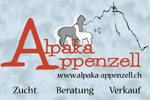Articles by Alpaca World Magazine:
Some Views on Evaluating Suri Fibre
Mike Safley
Definitive information about suri alpacas and their fibre is almost as rare as the suri alpaca themselves. A search of publications for articles is restricted to a few technical papers published in South America twenty years ago. Even in South America, there are few people with a complete understanding of the suri and no comprehensive studies which focus exclusively on the suri breed.
With this in mind, I was able to interview the leading Peruvian fibre experts on suris during a recent trip to Arequipa, Peru. The interviewees included Don Julio Barreda, as well as the following fibre processors:
1. Derek Michell, grandson of Frank Michell, who founded Michell CIA. Derek is currently in charge of Michell’s operations in Arequipa, Peru, where his firm buys, sorts, processes, and weaves suri fibre for sale in the international market.
2. Alonso Burgos, the head fleece buyer for Grupo Inca, headquartered in Arequipa. Alonso makes regular trips to the highlands to purchase suri fibre that is currently in high demand.
3. Glynn Smith, the person responsible for sales to the world market for Internacional Commercio of Arequipa. Glynn has over 15 years experience with alpaca processing since moving to Peru from Bradford, England, where he was involved in the spinning trades. He is involved in the international marketing of suri fibre.
I also corresponded with Cameron Holt of the Melbourne Textile Institute about his work involving suri fibre. Some of the information found here was from notes taken at an alpaca breeders’ clinic held during 1996 at Oregon State University with Dr. Julio Sumar as the featured speaker.
The answers to the questions posed were consistent from one expert to the next, unless otherwise noted.
WHAT ARE THE COMMON END USES OF SURI FIBRE?
Derek Michell: Suri fibre is utilised in the worsted spinning process. Little, if any, suri is spun using the woollen system.
Glynn Smith: Suri is used exclusively to weave fabric for outerwear – coats, and blazers. There has been talk of making jumpers (sweaters) from suri, but I don’t think that’s practical since suri tends to be heavy and doesn’t hold its shape in woollen applications. Suri fleece is more similar to mohair than merino.
Alonso Burgos: Suri cloth is always brushed in the finishing process to bring out its natural lustre. The fabric makes up into beautiful women’s and men’s overcoats, which are its primary end use.
WHERE IS THE PRIMARY MARKET FOR SURI?
Derek Michell: Suri is scarce. When the fashion trade demands suri in any volume, the orders are hard to fill and the price increases quickly. More recently, the price of suri has been very high. The total production of alpaca fibre is broken down roughly 6% suri, 94% huacaya.
Alonso Burgos: Currently, the majority of suri tops and slivers are sold to Italy. A smaller amount is made into cloth domestically and exported to the U.S., Europe, and Japan.
ARE THERE TEXTILE PROCESSING
CHARACTERISTICS THAT ARE UNIQUE TO SURI?
Glynn Smith: Suri requires some twist in the sliver to hold together properly. We use more combing oil when processing suri versus huacaya. The sliver tends to break or pull apart when it is drawn on to the spinning frame. This is due to its weight and slick surfaces. There is less friction along the fibre’s shaft.
WHAT CHARACTERISTICS DETERMINES THE PRICE OF SURI FLEECE?
Alonso Burgos: Fineness is the first consideration. Suri is valued for its excellent handle and lustre.
Glynn Smith: Suri, unlike huacaya, is graded into only three classifications:
Baby, < 21-24 microns
First fleece, 26-28 microns
Coarse, 30 > microns
The total production of suri averages about the same micron count as the total production of huacaya.
WHY IS SURI KNOWN FOR ITS HANDLE?
Alonso Burgos: Suri fibre feels slick. Some of this may be due to the natural grease in the fleece. Suri of a similar micron will present a softer handle than other fibre.
Cameron Holt of Australia has also done a considerable amount of work classifying suri fleece. The number of suris in Australia is less than in the U.S., but has been increasing steadily. Cameron recently began conducting studies with suri fibre. He is attempting to quantify data in the following areas:
- Variance of micron over the body
- Medulation % (on white fleece)
- Try to identify fibre type characteristics
- Soundness (tensile strength)
- Resistance to compression
- Opacity (white animals)
Cameron had this to add to the discussion on suri fibre.
CAN LUSTRE BE SCIENTIFICALLY MEASURED?
Cameron Holt: To my knowledge, there is, to date, no absolute measurement of lustre. There is some work currently being done in this area, of which one trial is looking at single fibres and using a detector measure reflection from a known light source.
The OFDA (Optical Fiber Diameter Analyser) can measure (white fibre) for opacity which tends to pick up those chalky fibre. This is the closest thing I know that can measure something similar to lustre.
IS SURI FIBRE STRONGER THAN HUACAYA FIBRE?
Cameron Holt: Research by Villarroel suggested huacaya fibres were stronger than suri, although the difference was small.
DOES SURI FIBRE CONTAIN A HIGHER LEVEL
OF GREASE THAN HUACAYA FIBRE?
Cameron Holt: Suri fibre contains low levels of wax and suet – range of 1 - 2% wax, 0.5 – 2.5% suet. I cannot find any data to separate huacaya with that of suri.
HOW WOULD YOU RANK THE ORDER OF
IMPORTANCE FOR SURI FIBRE CHARACTERISTICS?
Cameron Holt: The characteristics of importance are different for breeders than processors. I would rank them in the following way:
Breeder Processor
1. Fineness 1. Fineness
2. Lustre 2. Lustre
3. Density 3. Yield
4. Length 4. Length
5. Fleece Weight 5. Colour
TO WHAT DO YOU ATTRIBUTE THE SURI’S
REPUTATION FOR SUPERIOR HANDLE?
Cameron Holt: The cuticle along the shaft of the fibre seems to have a longer and tighter profile, providing a very smooth surface, which is a little less harsh than huacaya. Suri is similar to mohair.
DOES SURI FLEECE CONTAIN MORE OR
LESS MEDULATION THAN HUACAYA FIBRE?
Cameron Holt: Miguel Azucena of Bonanza Natural Fibers SRL in Bolivia recently told me that he believed suris exhibit less medulation in their fibre than huacaya. I intend to focus on this issue in my new research.
IN YOUR OPINION, IS LOCK STRUCTURE RELATED TO FINENESS?
Cameron Holt: I am aware of observations by a suri breeder from Bolivia that suggests the more locks per 10 cm square area, the finer the fleece. He suggests that 180-200 locks per 10cm/sq indicates a good animal. This approach is similar to counting crimps per inch in huacaya. I don’t know if this is true, but I intend to look closer at this idea.
During Dr. Julio Sumar’s alpaca breeding seminar in Corvallis, Oregon, he made the following observations about evaluating suris in the Peruvian show ring. He noted that the standard for evaluating suris is different than huacayas, both in conformation and fleece. The primary difference is the addition of points for lock and lustre in the suri score, deducting from fineness and crimp in the huacaya score. The following Peruvian point chart, used to grade show animals, notes the differences from the Peruvian perspective.
Fleece
Total 70 points out of 100
Trait Suri Huacaya
Fineness 35 40
Length 10 10
Density 10 10
Uniformity 5 5
Lock/Curl 5 N/A
Crimp N/A 5
Lustre 5 N/A
Total 70 70
Conformation
Total 30 points out of 100
Trait Suri Huacaya
General Appearance 10 5
Head 10 10
Size 5 10
Coverage 5 5
Total 30 30
The interview with Don Julio Barreda focused on selecting suris from the breeder’s point of view. Barreda has very definite opinions about the ideal suri. His thoughts are particularly interesting regarding density. He believes that the lock structure of suri fleece indicates the animal’s density. A long, thick, curled lock found uniformly throughout the animal’s fleece would suggest a heavier or denser fleece according to Don Julio.
DON JULIO, DESCRIBE YOUR IDEAL SURI ALPACA
Don Julio Barreda: First, the suri must exhibit lustre in its fleece. Next, it should be dense with well-covered legs, and its head should be well formed with fleece growing down from its chin. Finally, the lock formation should be uniform over its body, beginning below its ears and extending to its toes.
IS FINENESS A CONSIDERATION?
Don Julio Barreda: Of course, lustre in the fleece is indicative of fineness. Lustre and fineness go hand in hand. You can also find the same correlation in huacaya, although lustre is not as evident in huacaya fleece.
THERE IS MUCH DISCUSSION OF LUSTRE AMONG SURI
BREEDERS. IS LUSTRE A GENETIC TRAIT?
Don Julio Barreda: Of course, lustre is the number one genetic selection criteria. A cria will exhibit lustre at one month of age. If you were to survey 100 six-month-old cria and rank them for lustre, then shear them at 18-24 months of age, you would generally find the highest lustre cria to be the lowest micron tui.
SURI BREEDERS IN THE U.S. HAVE BEEN PONDERING THE SIGNIFICANCE
OF A SPECIFIC TYPE OF LOCK STRUCTURE. WHAT, IF ANYTHING, FOR INSTANCE DO PENCIL LOCKS INDICATE VS. THICK CURLED LOCKS?
Don Julio Barreda: First, you must understand that the environment can affect lock structure. The more humid the climate, the looser the lock. The drier the climate, the better the lock formation.
WHAT DOES THE LOCK STRUCTURE INDICATE?
Don Julio Barreda: A heavy, tightly curled lock is related to density. Thin or open locks showing a lot of volume in the fleece, indicates a less dense alpaca. Compactness (lack of volume) is the hallmark of the suri fleece. The sack or bale which is used to pack alpaca fleece in the Altiplano will accommodate 10 huacaya fleeces and 15 suri fleeces, each fleece weighing approximately the same.
Let me tell you a story. In the 1930s and early ‘40s, it was a fashion in the suri growing region of Nunoa to cross huacaya with suri. Breeders thought they would add density to their suris. They believed this because the fleece from hybrids looked fuller and had more volume. One day someone had the good sense to weigh the individual fleeces and compare the compact, well-curled ones with the high volume hybrids. They found that the fleece with the heavy compact curls of the typical suri weighed more.
DOES THE HEAVY CURL INDICATE A LACK OF FINENESS?
Don Julio Barreda: No, there is not necessarily a correlation. A suri fleece should be made up of thick curls or locks, and be fine as well. Look to lustre to indicate fineness.
HOW TO YOU ASSESS THE RELATIVE DENSITY OF YOUR SURIS?
Don Julio Barreda: I straddle the animal and comb my hands backwards along his body. If my hands meet resistance, the fleece is dense. This is due to the vertical compactness of the curled locks. This is especially true of a six-month-old cria. A huacaya, by contrast, will feel soft and there will be little resistance to your hands.
Suris are fascinating to study simply because there is so little known about them. With the increased interest from breeders in both the U.S. and Australia, the suri should become the subject of intense scrutiny, and I’m sure we will soon be on our way to unlocking many of the suri’s secrets.
Note: I want to acknowledge the invaluable assistance of my friend and fellow alpaca breeder, Dr. Mario Pedroza, whose fluent Spanish and knowledge of the subject matter allowed me to ask specific questions and receive detailed answers from the people we interviewed.
Tweet



